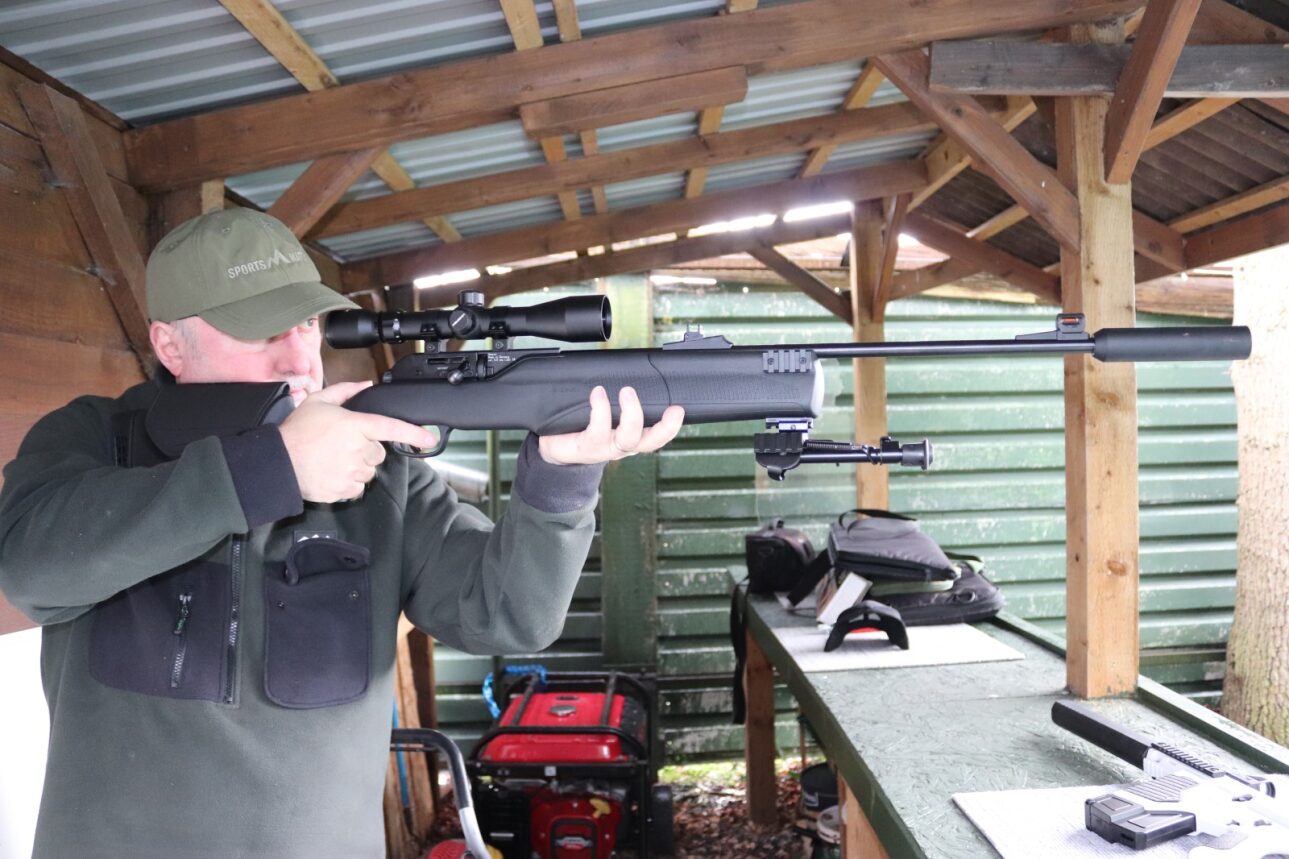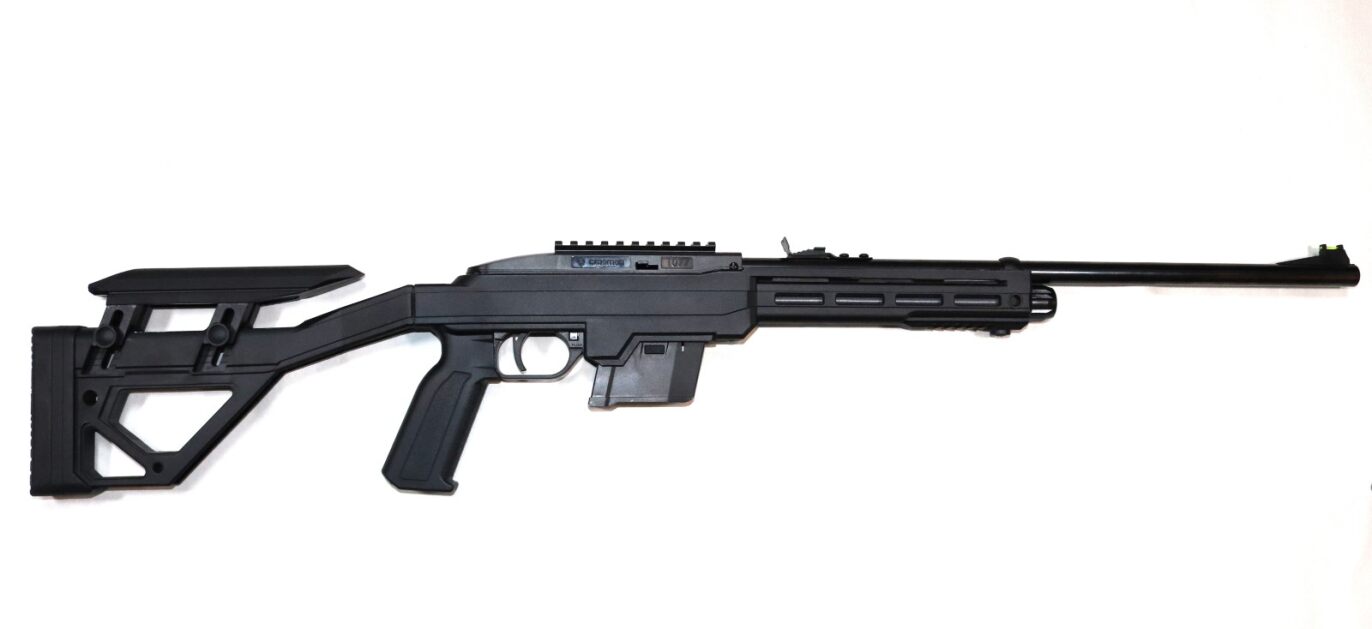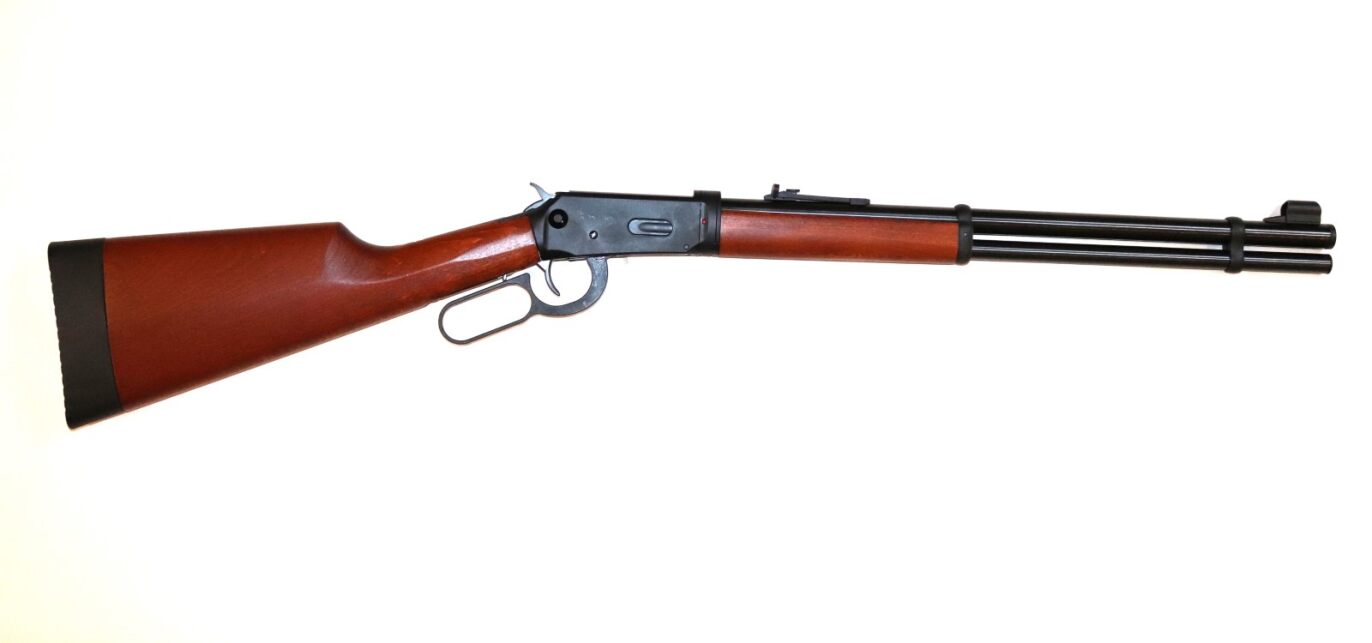So, you’re thinking of a new air rifle? Something to use in the garden for a bit of fun, but a rifle that’s perhaps also capable of dealing with a problem rat under the shed. You could buy a springer, of course, although having to cock the action by breaking the barrel or pulling on the underlever could get a little wearing after a couple of hours. A pre-charged pneumatic (PCP) will get around that problem, but then you’ll have to buy a stirrup pump, compressor or air bottle, which will need taking to a dive shop to get re-filled.
WHAT TO DO?
CO2 rifles are the answer – no spring to cock, and cheap compared to PCPs, they offer the same magazine-fed, recoil-free performance. All you need is a supply of CO2 gas canisters. They have their limitations, of course – nothing is perfect. Most of them lack enough power to take on live quarry, for example, and performance is affected by the weather, but for convenience, and in the right environment, they are simply hard to beat.
If that sounds like you, we have gathered together four of the best CO2 rifles on sale right now to help you out.
UMAREX 850 M2
£439.99
justairguns.co.uk

When it comes to CO2, Umarex has a seemingly unending range of pistols, rifles and replicas. The 850 M2 is arguably top of the crop and one of the few CO2 rifles capable of pest control.
You can buy the rifle alone for less than £400, but plonk a little more cash down and the kit we have on test represents remarkable value for money; coming with a 3-9x scope and mounts, silencer, bipod, a tin of pellets and even a few target cards. With all the toys attached, the M2 weighs just under 4kgs and measures 1,180mm – making it a full-size rifle.
The only thing you’ll need to buy to get started is an 88g CO2 canister which is inserted by first pulling off the plastic fore end cover and then screwing it in. Alternatively, the purchase of a Walther adaptor will enable the use of cheaper 12g CO2 bulbs.
The cover snaps onto the rest of the black plastic stock securely, which is a relief given that it is home to the 6-9” Harris-style bipod on a Picatinny rail underneath, not to mention any other accessories you decide to fit onto two more rails.
The rest of the handle is very solid, too, with a perforated rubber shoulder pad and cheek comb that is height adjustable with the use of a taco-shell-like extension.
Much of the rest of the M2’s action appears to be borrowed from its cousin the Walther Rotex RM8. Pulling back on the bolt gives access a catch underneath, which you’ll need to slide back to release the eight-shot rotary magazine from the left. Once loaded, the magazine pushes straight into the breech and moving the bolt forward again picks up the catch to lock it in place.
The cocking process also sets the automatic but re-settable safety catch located at the rear of the rifle. Sliding down a smaller catch in the middle enables you to push in the entire button and exposes a red dot to indicate the rifle is live.
Although it’s plastic, the trigger blade is nice and wide. Adjustment is possible via a screw accessed through a hole in the trigger guard. However, I found the let-off fine, straight out of the box, the first stage coming to a clear stop before breaking with a clean second stage.
The 850 M2 comes with a set of open sights; a hooded red fibre at the front and a pair of green fibres that are height adjustable at the rear. They are easily removed, though, which is handy because you’ll want to use the scope that comes with the rifle. That said, although it is more than adequate to get you started, an upgrade as soon as budget allows will enable you to exploit the M2’s potential fully.
On the range, and using the supplied scope, silencer and bipod, I put more than 300 shots through the M2 and there was plenty of CO2 left in the canister when I removed it. Power output peaked at 9.7 ft.lbs. despite an air temperature of just six degrees, with a variance of 18 feet per second over 10 shots.
That kind of power makes the 850 M2 capable of short to medium-range pest control, especially as 10p coin size groups using JSB Hades pellets were easily achievable out to 25 yards. I did try the UX Mosquito flathead pellets that came with the rifle and whilst they were okay when it came to tin cans, they lacked the kind of accuracy I’d demand for live quarry.
CROSMAN 1077 Tactical
£165
range-right.co.uk

Most of us started off by shooting tin cans in the back garden and I can’t think of a better rifle to get youngsters hooked on the sport, or for older shooters to relive their youth, than the Crosman 1077. There are several versions and the one we have on test is the 1077 Tactical. Thanks partly to a skeletonised plastic butt that has a height adjustable cheek comb – simply slacken of a couple of thumb screws – the rifle weighs only 1.7kgs and measures just 910mm.
In its lowest position, alignment is perfect to exploit the open sights – a windage and elevation adjustable notch at the rear, and green fibre at the front. Put a scope or red-dot sight on the Picatinny rail and you’ll be glad you can raise the comb.
You’ll need to gas up the 1077 Tac before the fun starts. It’s an easy process that involves unscrewing a knurled bolt at the front of the fore end, dropping a single 12g CO2 bulb in nose first and then screwing everything up tight again to release the gas. Expect 40-50 shots, or possibly more on a warm day.
The pistol grip is slender, making it ideal for youngsters, and finished with plenty of pimples. Forward of it, the trigger is basic and for all intents and purposes, single stage. Not that I found this to be a problem because the semi-automatic action encourages you to pull it as fast as you can once you’ve pushed the cross-bolt safety catch to the ‘off’ position.
Pinching a couple of raised buttons on each side releases the large magazine holder. Inside, the 12-shot .177 rotary magazine – two of which are supplied – is released by sliding back a catch. Once filled, the catch slides forward again to hold the magazine in place.
With the magazine holder slapped back into the action, all that remains is to pull the trigger as fast as you can. Crosman notes in its blurb that if a jam occurs, you will need to push a couple of lugs located below the scope rail down and forward. This releases the barrel so you can push a rod down from the muzzle.
The Crosman 1077 in all its guises is all about unpretentious plinking fun. On the range, and with plenty of tin cans lined up, accuracy was plenty good enough to reward quick firing, but take your time, perhaps even invest in a cheapy scope and bipod for the front accessory rail, and you’ll find the rifled barrel easily capable of taking on more challenging back-yard targets.
For what it’s worth – and statistics aren’t really the point of the Crosman 1077 Tac, power output maxed out at 4.6 ft.lbs.
CROSMAN ST-1
£299
range-right.co.uk

A long time ago in a meeting room far, far away, Crosman marketing executives in smart suits got together and decided they needed a new CO2 rifle. The result was the ST-1. I’d love to think ST-1 stands for ‘Star Trooper’. Unlike the other rifles on test, the ST-1 is a BB plinker, designed to do nothing more than shoot little balls downrange as quickly as you can pull the trigger, to send tin cans flying and put a smile on your face, but don’t make the mistake of dismissing the ST-1 as a toy. At nearly £300 it’s one of the more expensive BB guns on sale but take a look at the quality and design and you’ll begin to understand why.
With a removable barrel and butt section, I guess it also counts as perhaps the only true take-down BB gun on sale right now. Pulling back on a catch at the front of the action enables the barrel to twist off. The butt section is adjusted or removed completely by pushing in buttons on the underside of the stock stem.
Eye relief either to a scope or the provided red-dot sight, which is elevation and windage adjustable, is easy thanks to the long Picatinny rail, and the sliding stock makes the ST-1 accessible for youngsters, too, especially as the rifle can be shortened to just 775mm and weighs less than 3kgs.
An AR-style safety catch indicates three positions – safe, semi-auto and full auto – although the latter is disabled for the UK market. Below is the rubberised pistol grip covered in grippy stippling.
The huge magazine housing is released by pushing a button on the right side of the rifle, and pulling off a plastic cover plate reveals cavities for two 12g CO2 bulbs that have to be inserted in sequence – left then right – and tightened using the short Allen key. With that task complete, sliding a trap door open gives access to the .177 BB reservoir. Simply tip plenty in, return the trap door and CO2 cover then rotate the entire unit a few times to tip BBs into the loading portion of the magazine before slapping it all back into the rifle. All that’s required from then on is to pull back the cocking handle and pull the trigger – which incidentally has two stages – as fast as you can.
Thanks to its two-tone Star Wars colour scheme, the ST-1 is certainly eye-catching, but if you want to, there’s plenty of opportunity to bling it up even more with Picatinny accessory rails on both sides and underneath the fore end. There’s also a sling attachment bracket just behind the pistol grip.
Test time on the range was over far too soon and the pile of spent CO2 bulbs was testament to how much I enjoyed shooting the ST-1. On a cold day, I managed 80 shots at around 3.5 ft.lbs. before feeling it necessary to change the CO2 canisters.
The ST-1 is all about fast-firing fun and certainly delivers that remit, but once I’d got that out of my system, the trigger and red-dot sight were easily good enough to reward more considered shooting, turning chalk-men figures into dust with pleasing regularity.
WALTHER LEVER ACTION BLACK
£499.99
justairguns.co.uk

Kids – if you’re reading this and you’re after one of these, a word of warning. If your dad says, ‘Let me show you how to do it’, don’t fall for it because it’ll be hours before you get your rifle back again. I mention this because the Walther Lever Action Black is just about as much fun as you can have in a back garden with an air rifle. Measuring just a few millimetres short of a metre and weighing 2.6kgs, it is solidly well-made and operates with a precision engineered feel to it.
Taking a single 88g CO2 cannister, installation first requires a black plastic butt cap to be unscrewed, using a provided tool. With the capsule inserted, a pair of pincers is supplied to nip it up (and removed spent canisters) before the cap is replaced.
Two 8-shot .177 rotary magazines are included. To load one into the breech you must first push the faux cartridge port on the right of the action. Doing so pops out a breech loader to accept the magazine, a red indicator lets you know the rifle is loaded and that’s when the real funs starts. Cycling the lever action channels your inner John Wayne and the ‘clunk click’ operation is both intoxicating and authentic. The process probes a pellet through the magazine into the breech and cocks the hammer.
The block and lever action are plastic, although I had to get a magnet out to be sure, but don’t let that put you off because there is no sense of flimsiness or flex. The trigger is also plastic and like the other components, it’s nice and firm. It even has two stages.
John Wayne and Jessie Jones never had need of a telescopic sight so neither will you, which is good because the Winchester Lever Action has no provision to fit one. Instead, you get a fore sight that is adjustable for windage, and an open rear sight adjustable for elevation.
On arrival at the range for the test shoot, I couldn’t wait to throw some tins out, and with a couple of magazines loaded, I soon had them flying. The large 88g CO2 capsule delivered close to 300 shots, and I suspect warmer weather would have resulted in plenty more. In terms of power, the chronograph revealed output at around 5 ft.lbs. – ideal for in the garden.
GIVE IT SOME GAS
Too many airgunners turn their noses up at CO2 rifles, dismissing them as toys. Shame on them, I say, because we are all entitled to enjoy whatever facet of the sport takes our fancy. I will admit to shooting CO2 guns only occasionally, but every time I do, I am reminded of what great fun they are.
When it comes to plinking in the garden, the combination of low power, quiet muzzle report and intoxicating semi-automatic shooting in many cases makes them hard to beat, and if you take your time, they will reward good technique and are more than capable of taking on the most challenging of plinking targets, as well as putting together tight groups on paper.